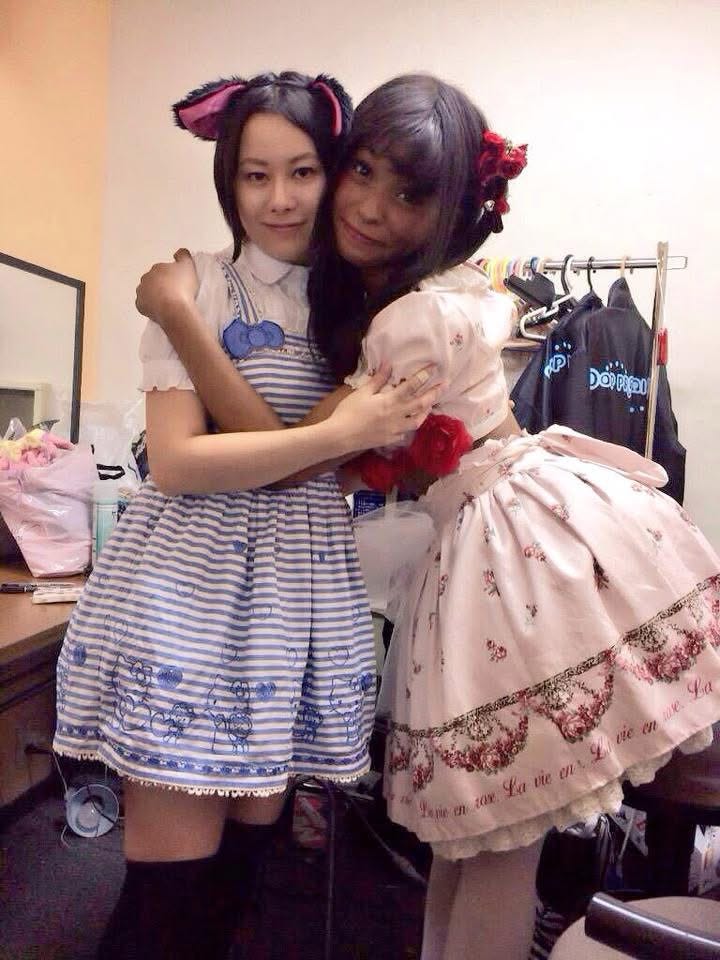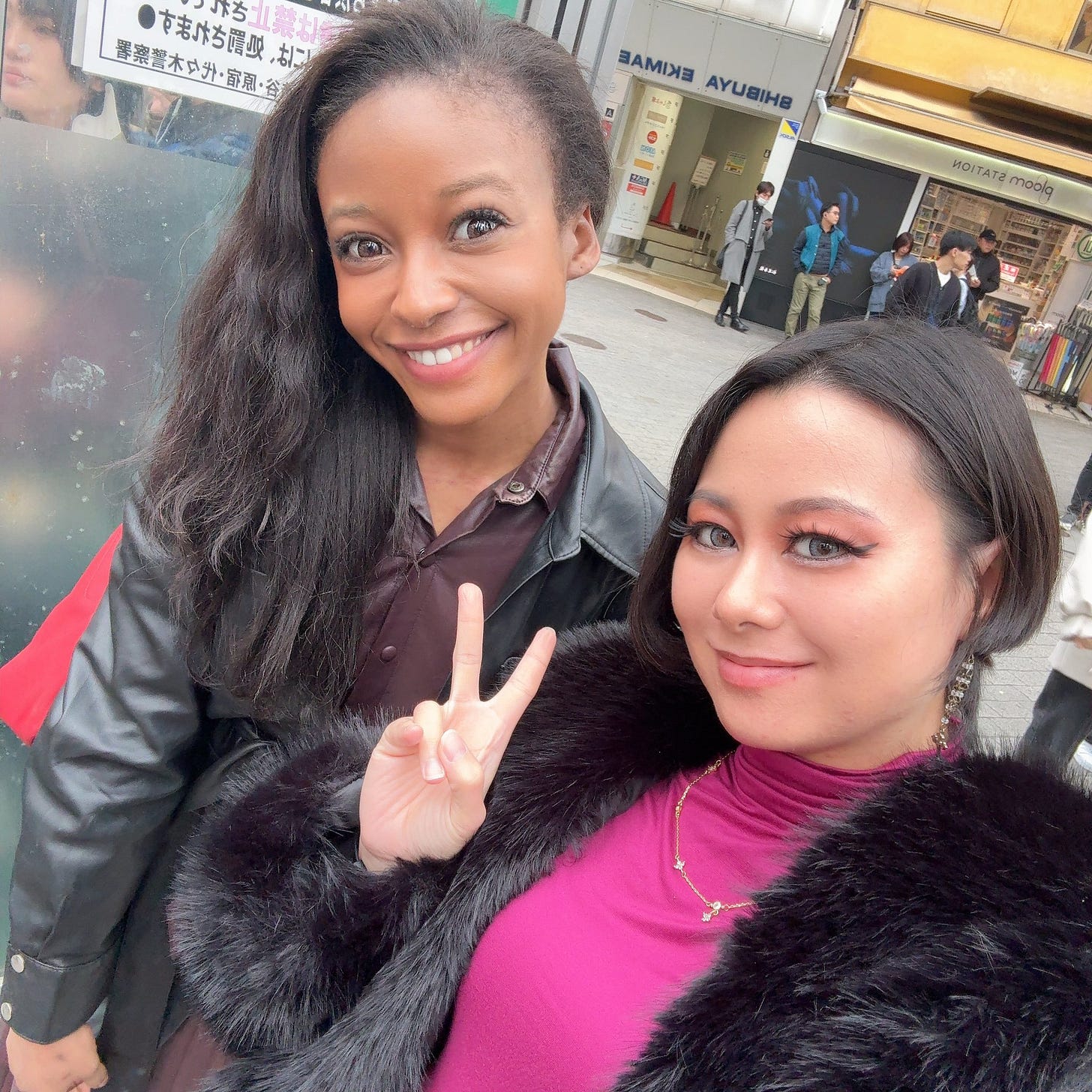HOW MUCH DO J-POP IDOLS GET PAID?
Before I was an idol, I worked at McDonald’s as a fry cook and as a maid at a local anime cafe. Since working as an idol, I’ve been a bar hostess, a union organizer, an SAT tutor, and held various full-time technical roles. My undergraduate research dissertation was on migrant labor. So when people ask me about the idol industry, as an actual form of labor, I’ve considered it quite a bit.
Western media outlets often report that the Japanese idol industry is financially exploitative, extracting value from young people who don’t know any better. But is that actually true? If so, what is the level of exploitation happening here?
The Industry’s Money
The J-pop idol market in Japan was valued at 165 billion yen in fiscal year 2022, which is roughly $1.17-1.34 billion USD. The broader global idol group market(male and non-Japanese East Asian idols included) was estimated at $19 billion in 2025 and is projected to reach $55 billion by 2033.
There’s a ton of money being made in this unregulated, somewhat nascent industry. But in an era of music streaming platforms paying pennies on the dollar, it may be hard to understand how the industry makes money in the first place.
Groups Actually Make Money
Believe it or not, in 2025, music can sell. It just needs strong marketing. Similar to Western influencers, Japanese and Korean idols make money because their job isn’t to sing. The job of an idol is to form a parasocial relationship with the targeted consumer audience. Given that the industry shills an emotional bond rather than just pop tunes, fans are more likely to buy merchandise, CDs, and other forms of financial goods to support their oshi/bias (favorite members). Outside of idol groups, Japan also has very strict piracy laws, and it has much more cultural stigma.
Today, idol groups also generate revenue through:
Live concerts and event appearances
“Handshake events” where fans pay to briefly meet idols
Merchandise and photo sets (especially popular with chika idols)
Appearances in anime, games, and other media
Brand endorsements and commercials
Like all industries, however, much of the money is made from…ads!
Since its inception, Japanese idol groups have been designed to sell things. A consumption item packaged as an emotional exchange (an idol) sells another item, a consumption item packaged as a material good. All good idols are valued for their accessibility and earnestness, and crucially, for their ability to sell products.
AKB48 had a long time ad campaign with Glico, the candy producer. One of the most famous stunts featured a woman who was touted as a new member of the group. It was revealed later that this was merely a computer graphic that had composite facial features of the top members. (also for some reason a philosphy of science blog wrote about it at the time, haha)
Many idol groups these days are closely associated with a company selling a product. LADYBABY, famously featuring Australian wrestler LadyBeard and 2 cute idols (both former Miss ID contestants!), was initially funded and developed by costume company, Clearstone.
But how much of this revenue goes to the idols?
The vast majority of idols find themselves in one of two compensation structures.
System 1: The Jimusho Salary Model
In the West, much of the music industry is run by music labels. In Japan and Korea, a lot of this is with in-house talent agencies. Japanese Jimusho(事務所), aka talent agencies, have salaried structures. This is sorta similar to the “360” deals adopted by Western music labels. In Japan, this often means the talent agency financially supports the young person’s career with singing and dancing lessons, promotion, plastic surgery, and even housing.
In return, idols typically receive a stipend of a few thousand dollars a month, with historical rates around $2,000 per month but now closer to $4,500-5,000 per month.
So the company takes on a huge amount of initial risk with the hopes that the idol will return on their investment. This is also why idol groups tend to be so large in number of members. Partially because it allows fans a variety of personalities and personas to choose from, but it’s also because companies want to hedge their bets.
This system can feel quite unfair when you consider the fact that some of these groups, like AKB48 at its height, made 100s of millions of dollars per year. Even then, their top performers like Maeda Atsuko made roughly 20 million yen annually, which is approximately $243,000. Meanwhile, mid-tier members made around 300,000-400,000 yen per month, which is roughly $2,800-$3,700. Allegedly, this is about the bottom tier of salary for members.
When you’re 1 of many 50 in a group making 100s of millions per year, is $3k per month + housing exploitative? Imagine you’re 20-something and just want to do your art thing. A company sponsors you to do exactly that, and Japan’s cost of living is considerably lower than most other world-class cities. That’s not exactly a bad deal. It’s just a system that leaves the performer living hand to mouth and without much creative ownership of their cultural impact.
System 2: The Revenue Split Model
The second system, popular with smaller groups, is where things get a bit trickier. The idol receives limited training and support, but gets 70% of the cut for gigs while the talent agency takes 30%. That 70% then gets divided among all group members.
If you’re in a group of 10 girls, your 70% quickly becomes 7%. And we’re not talking about massive gig fees here. Underground or “chika” idols, the performers who do small venue shows for exclusive audiences, often make as little as ¥20,000-70,000 per month, roughly $150-500. One underground idol described receiving 5,000 yen ($35) monthly for travel expenses while performing almost daily, saying “the money wasn’t nearly enough to cover the cost of going to performance venues”. Most chika idols must hold other jobs, and even “full-time” chika idols rarely cover living expenses solely through idol activities.
If your group books one small venue show per week at maybe ¥100,000 total (being generous), and you’re one of eight members, you’re looking at ¥8,750 per show, or roughly ¥35,000 monthly, about $250. Add in a couple of small promotional appearances, and you might crack ¥70,000 ($500) if you’re lucky.
Some idols are completely self-produced, a model that is becoming more popular. This means that she may build a following online, start booking shows herself, and then pay someone to work as her manager or assistant. This is tough because the Japanese like to work with longstanding relationships, and the Jimusho system kind of supports that, but the internet is making this more possible.
Compared to other large industrialized cities, Tokyo also has a pretty low cost of living.
Idol is seen more like a temporary category or a transitional category, or even a “hobby” for many young women. So making $700-$1,000 per month isn’t that bad if you’d make that working at McDonald’s or a Maid cafe anyway.
Many idols substitute their income by working another job. I had friends who worked as waitresses or maid cafe maids on the side. When I was in my group, Chick Girls, a few members worked as “hostesses” in high-end clubs in Ginza.
(my friend and I, in 2015!)
I have a former idol friend I knew back from my Akihabara idol days who still lives and works as a full-time creative. She occasionally does modeling, and she performs in “cultural events” as a dancer, living a life of just making and doing things she enjoys. When I visited Tokyo in late 2023, she told me her rent was just $300!
us in 2023!
So, Is It Exploitative?
If you’re a 20-year-old getting $3,000 monthly, housing covered, doing what you love, and living in Tokyo, where that money actually goes pretty far? It may not be a financially sound decision, but it’s also a far better situation than most artists find themselves in.
I see the real issue as the limiting structure. You have no bargaining power, and you can’t negotiate. You also may have little leverage because you’re one of many in a small group. Agencies maintain nearly complete control through restrictive contracts that prevent idols from leaving or negotiating better terms. The idol system isn’t much different than Japanese salarymen who are unable to disobey their employers. You generate millions in revenue for your agency through commercials and endorsements, and your salary doesn’t budge.
In the chika(underground) idol world, it absolutely can be exploitative. You’re working for below minimum wage with no benefits, no job security, and giving 30% to an agency that provides minimal support.
In the major Jimusho system? It’s more ambiguous. You’re getting training, housing, and a platform. But you’re also signing away years of your life and all bargaining power for a fixed salary that doesn’t reflect the value you create. But does that even matter if you get to be a ✨star✨?
The Japanese idol industry is worth over a billion dollars. Somebody’s getting rich off this system. It’s just not the girls singing and dancing.
SUPPLEMENTAL CONTENT
アゲアゲマネー (Give Me Money!) by LADYBABY plays on the concept of idols begging their management company for more money.







In a fun story, last trip to Japan I'm at a friend's birthday show. Besides the friend I went with, there are 2 other foreigners in the audience.
So after I chat them up because, hey, I like being social! And one of them has a big ole beard and an Aussie accent and you can see where this is going!
Which is to say, Ladybeard is awesome, lunch after as super fun, and can't wait till I can see him again :D
Great article! The fixed salary is definitely better than average for young women (of course it’s not a set up for life and you have to make a career switch at some point so that’s a big disadvantage) and the underground stuff does seem to pay like other part time jobs, although it’s maybe a bit more effort for the money but also more fun.
I don’t necessarily think the agencies are swimming in money and exploitive, they have a lot of costs and if idols don’t sell well they also have to deal with the loss of investment and effort. Most small agencies are probably struggling.